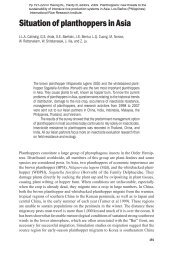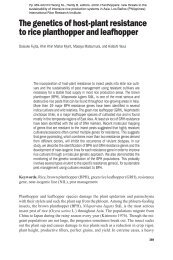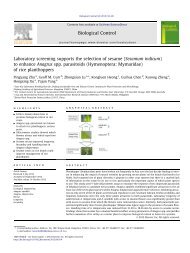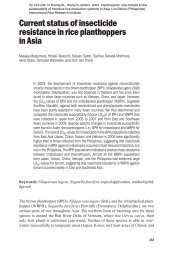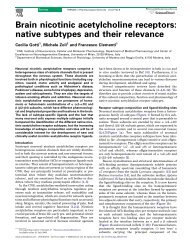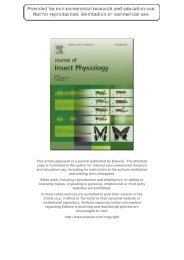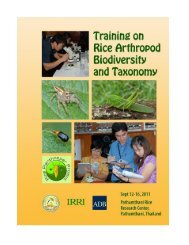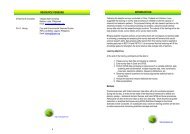Final Report Appendix 5 (Ho Chi Minh City Revised ... - Ricehoppers
Final Report Appendix 5 (Ho Chi Minh City Revised ... - Ricehoppers
Final Report Appendix 5 (Ho Chi Minh City Revised ... - Ricehoppers
Create successful ePaper yourself
Turn your PDF publications into a flip-book with our unique Google optimized e-Paper software.
the original blower-vac apparatus.<br />
A<br />
B<br />
(A) A square and (B) a circular sampling enclosure, which can enclose (A) 4 hills or 0.25 m 2 for<br />
transplanted rice and (B) 0.1 m 2 for direct seeded rice, as shown in the above picture, should be<br />
prepared for sampling.<br />
Sampling of arthropods by blower-vac machine<br />
1. To sample using the blower-vac, drop the plastic bin enclosure over the rice plants.<br />
2. Suck the arthropods from the nylon net sleeve, the air column, the plant<br />
surfaces and finally the water surface. The suction time will depend until all the<br />
insects are collected (suction time will later be prolonged as rice crop matures).<br />
3. Place the collected insects in labeled vials with 70% ethanol.<br />
4. Sort and identify all the insects based on guilds as early as possible and all the<br />
predator specimens should be kept in vials with 100% ethanol and store at -18 to<br />
20 o C.<br />
5. Do the sampling on seedling, tillering, booting, and milking stages of the rice crop in<br />
the morning. Avoid sampling during the afternoon.<br />
A blower-vac machine in action in the field.<br />
Bait traps for egg parasitization



